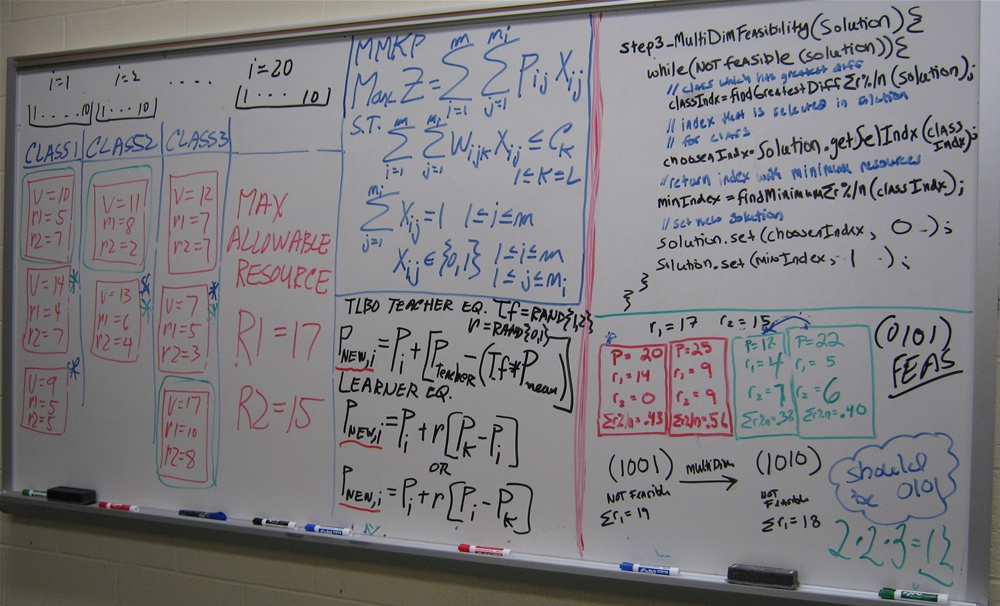Metaheuristic Research for Solving Combinatorial Optimization Problems
Dr. Amy Lu and Dr. Francis J. Vasko, Department of Mathematics of Kutztown University of PA, are conducting ongoing research into the use of new and novel metaheuristic approaches for solving large computationally complex combinatorial optimization problems which have numerous and important business and industrial applications.
Metaheuristics are solution strategies (as opposed to specific algorithms) that can be used to generate very good solutions (perhaps optimal) to computationally complex combinatorial problems in reasonable computing time. These problems are so difficult to solve exactly (proven best solutions), even with the fast computers of today (2015); generating a proven optimal solution could require days, weeks, months or even years. Metaheuristics that can generate high quality solutions using little or moderate computer resources are very desirable because of their wide industrial and business applications. Dr. Lu and Dr. Vasko's current work has resulted in a paper dealing with the efficient solution of an important computationally complex combinatorial optimization problem known as the set covering problem. This paper has been accepted for publication in the peer-reviewed research journal International Journal of Applied Metaheuristic Computing. Additional research results for the set covering problem has resulted in a paper co-authored with Mr. Ken Zyma (a KU computer science graduate student) and currently being reviewed for publication consideration in the international, peer-reviewed research journal European Journal of Operational Research. Additionally, Dr. Lu, Dr. Vasko and Mr. Zyma have submitted a paper for publication consideration in the international, peer-reviewed journal Journal of Metaheuristics. The paper submitted to the Journal of Metaheuristics deals with a novel and highly effective metaheuristic solution approach that they developed for the important and highly complex multiple-choice multidimensional knapsack problem.
Finally, Dr. Lu and Dr. Vasko have collaborated with Ms. Lisa Vasko and Mr. Trevor Drummond on research dealing with student perceptions concerning probability. Their research resulted in a paper entitled "Probability and Perception: The Representativeness Heuristic in Action" published as the cover article in Mathematics Teacher, Volume 108, No.2, pp126-131.







